#Java Software Development
Explore tagged Tumblr posts
Text
What Is Object-Oriented Programming in Java and Why Does It Matter?

Java is super popular in the programming world, and one of the main reasons for that is its use of object-oriented programming (OOP). So, what exactly is OOP in Java, and why should you care? OOP is a way to organize your code by grouping related data and functions into objects. This makes Java easier to work with, more organized, and simpler to update.
Key Ideas Behind Object-Oriented Programming
To get a grip on OOP in Java, you need to know four main ideas: Encapsulation, Inheritance, Polymorphism, and Abstraction. These concepts help you write clean and reusable code, which is pretty important in software development today.
Encapsulation: Keeping Data Safe
Encapsulation means protecting the internal data of an object from being accessed directly. You do this using private variables and public methods. When you take a Java course in Coimbatore, you’ll learn how this helps keep your code secure and safeguards data from accidental changes.
Inheritance: Building on Existing Code
Inheritance lets a new class take on the properties of an existing class, which cuts down on code repetition and encourages reuse. Grasping this idea is key if you want to dive deeper into Java development, especially in a Java Full Stack Developer course in Coimbatore.
Polymorphism: Flexibility in Code
Polymorphism allows you to treat objects as if they are from their parent class rather than their specific class. This means you can write more flexible code that works across different cases. You’ll definitely encounter this in Java training in Coimbatore, and it’s essential for creating scalable applications.
Abstraction: Simplifying Complexity
Abstraction is all about hiding the messy details and only showing what’s necessary. For example, when you use your smartphone, you don’t need to understand how everything works inside it. Java uses abstract classes and interfaces to make things simpler, which you’ll notice in any solid Java course in Coimbatore.
Why It Matters in Real Life
So, circling back: What is OOP in Java and why is it important? Its real strength comes from making big software projects easier to manage. OOP allows multiple developers to work on their parts without stepping on each other’s toes.
OOP and Full Stack Development
Full stack developers cover both the frontend and backend. Understanding OOP in Java can make your backend logic much better. That’s why a Java Full Stack Developer Course in Coimbatore focuses on OOP right from the start.
Java and Your Career Path
If you're looking to become a software developer, getting a good handle on OOP is a must. Companies love using Java for building big applications because of its OOP focus. Joining a Java training program in Coimbatore can help you get the practical experience you need to be job-ready.
Wrapping Up: Start Your Java Journey with Xplore IT Corp
So, what is object-oriented programming in Java and why is it important? It’s a great way to create secure and reusable applications. Whether you’re interested in a Java Course in Coimbatore, a Full Stack Developer course, or overall Java training, Xplore IT Corp has programs to help you kick off your career.
FAQs
1. What are the main ideas of OOP in Java?
The key ideas are Encapsulation, Inheritance, Polymorphism, and Abstraction.
2. Why should I learn OOP in Java?
Because it’s the foundation of Java and helps you create modular and efficient code.
3. Is it tough to learn OOP for beginners?
Not really! With good guidance from a quality Java training program in Coimbatore, it becomes easy and fun.
4. Do I need to know OOP for full stack development?
Definitely! Most backend work in full stack development is based on OOP, which is covered in a Java Full Stack Developer Course in Coimbatore.
5. Where can I find good Java courses in Coimbatore?
You should check out Xplore IT Corp; they’re known for offering the best Java courses around.
#Java programming#object-oriented concepts#Java syntax#Java classes#Java objects#Java methods#Java interface#Java inheritance#Java encapsulation#Java abstraction#Java polymorphism#Java virtual machine#Java development tools#Java backend development#Java software development#Java programming basics#advanced Java programming#Java application development#Java code examples#Java programming logic
0 notes
Text
Java vs .NET vs Python for Enterprise Software

Choosing the right technology stack is critical for building robust, scalable enterprise software. Java, .NET, and Python are three of the most popular choices. Be it custom Java software development or .Net and Python, each offers unique strengths, and selecting the most suitable one depends on specific project requirements such as performance, security, maintainability, and available talent. This blog compares Java, .NET, and Python in the enterprise software landscape.
0 notes
Text
Discover the strategic benefits that will propel Java to the forefront of enterprise software development over the next decade. Explore the key trends, innovations, and insights shaping Java's dominance in coding for the future.
0 notes
Text

Welcome to InnovateTech Solutions, a leading Java software development company dedicated to delivering cutting-edge, scalable, and innovative software solutions. With a passion for technology and a team of highly skilled Java developers, we are committed to helping businesses and organizations achieve their digital goals through bespoke software applications.
0 notes
Text
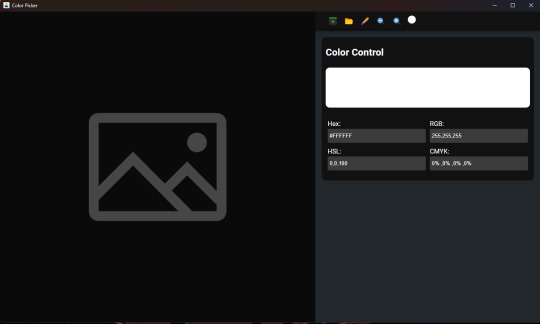

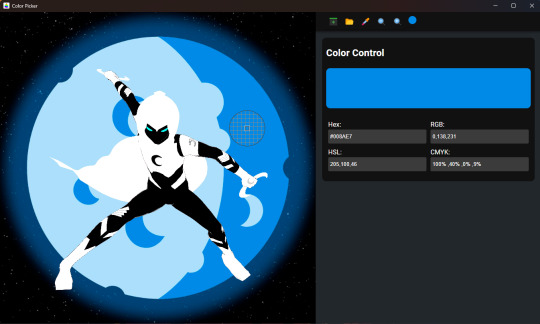

Por fin termine la versión beta de un proyecto en #React , se trata de un extractor de color o un #colorpicker.
#reactjs#javascript#java software development#vroid#vroid studio#webdevelopment#webdesign#colors#color picked flags
1 note
·
View note
Text


Getting old is interesting. I've always been a middle ground between sports (skateboarding, surfing, jiu-jitsu) and an avid student. Over time, it's clear that you can't keep trying the same tricks, just as you can't study the same way.
Today, as I'm writing an article about event-driven architectures, I realize that final exams in college were much easier, just like it's not as easy to jump the same stairs on a skateboard as I did when I was 18. In the image, you can see my favorite note-taking app, Obsidian, and my Neovim terminal. I'm diving deep into Java, and for that, I'm taking a Spring Boot bootcamp offered by Claro through the DIO Innovation One platform.
#coding#linux#developer#programming#programmer#software#software development#student#study aesthetic#study blog#studyblr#studying#studentlife#studentlearning#masterdegree#master degree#softwareengineering#softwareengineer#study motivation#studyblr community#brazil#java#javaprogramming#apachekafka#self improvement#self study#study inspiration#room#room decor#dark academia
172 notes
·
View notes
Text
Coding: My Escape, My Obsession
Programming—ahh, what a paradox! Sometimes it’s an absolute thrill, and other times, it’s the most stressful thing ever. For me, coding isn’t just a skill; it’s my escape. Whenever life gets heavy, my mind instinctively drifts to programming. New ideas, fresh logic, endless possibilities—it’s like therapy but with syntax errors.
But somewhere along the way, this escape became a full-blown obsession. My four years of engineering? A blur of code, projects, and fixing bugs—mine and everyone else's. I was always working, always solving something. And now, when I look back, I struggle to find those carefree moments of pure fun. Sure, I enjoyed college, but every memory somehow loops back to programming.
I don’t regret it. I don’t claim to be a coding genius either—I’m still learning, still growing. But one thing’s for sure: programming has shaped me in ways I never imagined. It gave me purpose, resilience, and a language beyond words.
Yet, here’s what I’ve realized—life isn’t just about writing perfect code; it’s about writing a story worth remembering. And while programming will always be a part of me, I want to step beyond the screen, embrace new experiences, and create moments that don’t just end in a semicolon.
Because in the end, the best code I’ll ever write is the one that balances passion with life itself.
#programming#education#software engineering#lifestyle#programmer#coding#developer#career#java#quotes#machine learning
14 notes
·
View notes
Text
Network switches
What’s a network switch ?
A switch is a device used in computer networks to connect multiple devices together within a single local area network (LAN). Its main role is to facilitate communication between different connected devices, such as computers, printers, servers, IP phones, etc.
It is a mini-computer which is made up of RAM, ROM, flash RAM, NVRAM, a microprocessor, connectivity ports and even an operating system.

RAM
RAM (Random Access Memory) contains the current configuration of the switch and temporarily stores the MAC address table, which is then processed by the microprocessor.
Microprocessor
The microprocessor is the heart of the switch, responsible for data processing, including switching and creating links between multiple devices.
External memories
External memories, such as flash RAM, ROM, and NVRAM (Non-Volatile RAM), store configuration files , different versions of the IOS , etc ...
Ports
The switch ports are the communication interfaces of the switch. There are several of them, generally 24 for a Cisco switch. Each port is associated with an LED which indicates its status and activity.

How does it work ?
Now how does a switch work to transfer information from one machine to another?
Suppose we have 4 machines: A, B, C and D connected to our switch in ports 1, 2, 3 and 4 as follows:
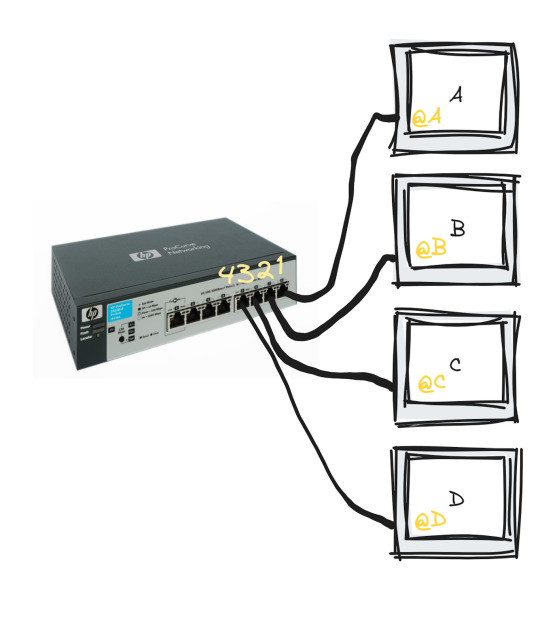
The switch only works with MAC addresses , so basically we have an empty MAC address table stored in RAM as soon as the switch starts up which looks like this :

Transmitting data from machine A to machine B happens in the following steps:
Machine A sends a frame to machine B
Once this frame arrives at port 1 (which is the one linked to A), the switch reads the source MAC address and stores it in the MAC address table
The switch reads the destination MAC address and looks for it in the table, if it is not in the table, it broadcasts to all the active machines connected to the switch except the source one.
If the port linked to the machine we want is active, it sends a response frame from which the switch reads the MAC address we were looking for (@B)
Once done, it records the MAC address of B in the table.

This process repeats until the switch reaches what is called "MAC address table stability", that is to say it knows all the MAC addresses of the connected machines and has no more need to broadcast.
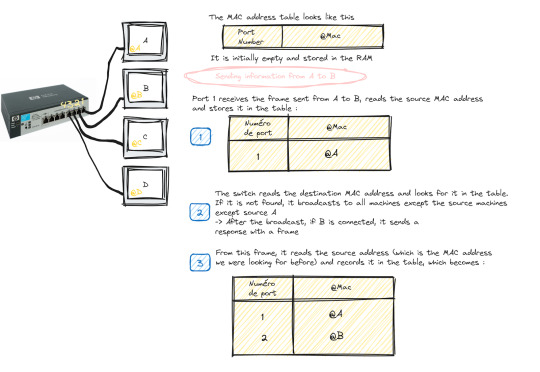
Starting and configuring a switch
When it comes to booting a switch, the process is similar to that of a traditional computer system:
POST (Power-On Self Test): The switch performs proper functioning tests on all hardware.
Loading IOS (Internetwork Operating System): The switch operating system is loaded.
Loading the configuration. At this stage we have two cases:
Either the switch already has a startup configuration defined and stored in NVRAM
Either the switch is blank and it is up to us to define the startup configuration when it goes to setup mode
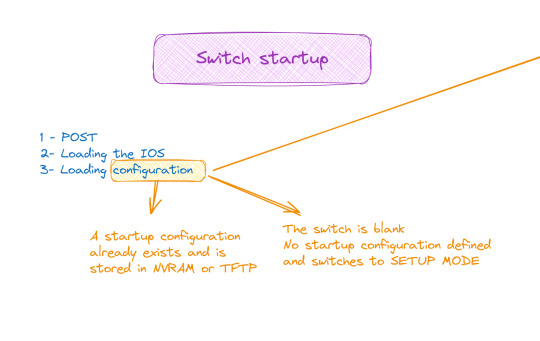
Switch configuration

The configuration of a switch is done through different modes, such as user mode, privileged mode and global configuration mode, which allows access to specific configuration modes, such as interface mode, routing mode, line mode, etc.
And to do all this of course you must first connect the switch with the machine via the console cable and open a terminal emulator
💡 It should be noted that the only machine that can configure the switch is the one connected to it by a console cable, the others are only hosts.
#software#network switches#codeblr#code#css#html#javascript#java development company#python#studyblr#progblr#programming#comp sci#web design#web developers#web development#website design#webdev#website#tech#html css#learn to code
99 notes
·
View notes
Text
Spent several hours today arguing with the other devs about how to rewrite our enterprise app launcher/updater because right now its pretty much a trojan.
in a nutshell: It currently downloads the individual JARs from our WildFly server, adds them to its classpath via the system classloader, then launches a target main method through reflection, effectively becoming that running process.
Someone from OPS found the list of security exceptions they needed to add to make it work (spoiler its a lot)
I hope the security team is preparing to have a heart attack when we have our meeting Wednesday
46 notes
·
View notes
Text
I now know the devastating feelings of being laid off of work.
Mind racing.
Am I reasonably competitive in the current Software Engineer job market? Don’t think about that yet.
Oh noes, I’ll have to study for coding interviews *again*. No stop, wait until Monday. Do ANYTHING ELSE.
Cuddle stuffed animal. Hug husband. Call mom, dad, sister. Join their vacation coming up. Stick to good news. Play Minecraft. Fold laundry. Play Overwatch. Plan house decorations. Rewatch Spider-verse. Little things.
#feel free to send me recent wfh or remote Java or TS job postings#personal#software engineer#software development#software engineering#layoffs
13 notes
·
View notes
Text
Does learning Java increase my salary?
1. Introduction to the Java Job Market
Java is still one of the hottest programming languages out there. Whether you're just starting or have been coding for a while, knowing Java can really help your career. A common question is: Does learning Java boost my paycheck? The answer is yes—companies really want people who know Java because it's so flexible for web, mobile, and big business apps. Key topics include Java programming, Java developers, and job roles related to it.
Key Point: Java skills are in demand across different industries and can help increase your salary.
2. Java's Popularity and Market Demand
Big names like Amazon, Netflix, and Google use Java because it handles large-scale apps well. So, does learning Java increase my salary? Definitely. Employers will pay a premium for those who are good at Java. Key terms include Java software development, full stack, and backend developer.
Key Point: There’s a strong demand for Java devs, which leads to better pay and job security.
3. Java Skills and Salary Growth
Having Java skills gives you an edge. Companies are looking for people who know frameworks like Spring Boot and tools like Maven. Will learning Java increase my salary? For sure. With the right certifications and experience, you can earn more. And signing up for a Java course in Coimbatore can really help solidify your skills.
Key Point: Specialized Java knowledge can lead to promotions and salary increases.
4. Role of Certifications in Salary Hike
Getting a Java certification is a smart way to stand out. A lot of people choose the Java Full Stack Developer Course in Coimbatore for hands-on practice. Certifications prove your skills, and the answer to the question: Does learning Java bump up my salary? Yes.
Key Point: Java certifications help validate your skills and can lead to better pay.
5. Java Job Roles and Their Pay Scales
Java jobs range from junior developers to senior architects, and each level comes with higher pay. A Java training in Coimbatore can get you ready for roles like Full Stack Developer or Software Engineer. Is there a salary increase if you learn Java? Absolutely, especially for specialized roles.
Key Point: There are many roles in Java, and each offers attractive salary packages.
6. Java vs. Other Programming Languages in Salary
Java developers often earn more than those working with less popular languages. Unlike some newer languages, Java jobs tend to be more stable. Does learning Java mean better pay? Yes, compared to other languages, Java usually offers more consistent salaries.
Key Point: Java's long-standing presence in the industry generally means better pay than many newer languages.
7. Full Stack Java Developer Salary Benefits
Full Stack Java Developers are among the best paid in tech. Taking a Java Full Stack Developer Course in Coimbatore can prepare you for the job market. Will learning Java increase my salary? For sure—especially in full stack roles where you need to be skilled in both backend and frontend.
Key Point: Full Stack Java positions offer top salaries and are in high demand.
8. Java's Role in Enterprise Applications
Java is key for many enterprise systems. Learning enterprise-level Java can really answer the question: Does it help me earn more? Yes. A training program in Coimbatore that teaches things like Hibernate and JSP is worth considering.
Key Point: Skills in enterprise Java can set you up for well-paying jobs.
9. Local Training Institutes and Career Impact
Joining a local Java course in Coimbatore can boost your earnings. These programs offer hands-on projects and guidance from experts. So, does learning Java help with salary? Yes—local training can lead to quicker job growth.
Key Point: Local Java training can speed up your skills and help with job placements.
10. Final Thoughts and Brand Mention
In summary, does learning Java increase my salary? Yes, through certifications, full stack skills, and local training. Consider a reputable place like Xplore It Corp for training in Coimbatore, offering courses designed to meet job market needs.
Key Point: Xplore It Corp provides practical Java courses that can help you earn more.
FAQs:
1. Does learning Java help me earn more with no experience?
Yes. Even beginners can get better job offers after certified Java training.
2. What’s the average salary after a Java course in Coimbatore?
Freshers typically earn around ₹3-5 LPA, and pay can increase significantly after 1-2 years.
3. Is a Java Full Stack Developer Course in Coimbatore worth it?
Definitely. Full stack developers are in demand and usually earn 20-30% more.
4. How long before I see salary benefits after Java training?
Usually, you can expect to see salary increases within 6-12 months after completing the course.
5. Can I switch to Java and expect a pay increase?
Yes. Many people move from non-tech jobs to Java and see a boost in their salary.
#Java programming#Java developer#Java applications#Core Java#Java certification#Java frameworks#Spring Framework#Java full stack#Java backend developer#Java software development#Java training course#Java job roles#Object-oriented programming#Java IDE#Java runtime environment#Java REST API#J2EE#Java vs Python#Java vs JavaScript#Secure Java coding#Java deployment#Java enterprise solutions#Java bootcamp#Java multithreading#Java performance optimization
0 notes
Text
Dev Journals #1 -- Code: The Gathering
Hello, there! Call me Mika Snowden, how do you do?
Presumptuous name, isn't it? Thought so too, but the other option was Turing, which is even more presumptuous.
Anyhow, my nickname's presumptuousness isn't the subject of this post. In fact, the subject of the day is a new project I'm starting.
You see, lovelies, I'm a junior developer who would like to become a Java-Angular FullStack Developer. I'm currently in a C#-Angular position, so I'm studying Java to find a new job.
As I still don't have any Java certifications, I've decided to study for them, so I wrote down a couple of project ideas to help me practice. Today, I started one of them and informed my friends about it. Why: Because, unlike my other silly projects, this one might be useful to someone.
I play Magic: The Gathering with my friends, and we have a box where we keep cards anyone can choose from to add to their deck. The issue is: no one ever knows what cards are there, how many, and who the box is with. Since our friendship group has been growing, I've decided to take upon myself the challenge of coding a program that keeps track of said cards.
"Mika, there's already an app for that."
I was informed, but I need an excuse to study Java. What excuse would be better than something you like doing?
So, I'm off to work.
Here, lovelies, are my first day of work fruits. Not much -- I found out I'm easily distracted --, but it's a start.
First, we have my starting object:
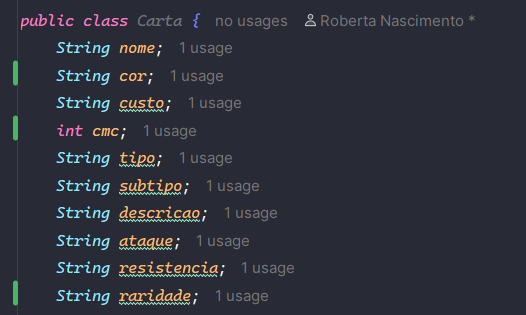
I made it work with some setters, after making every attribute private, and we managed to get a nice output on console.
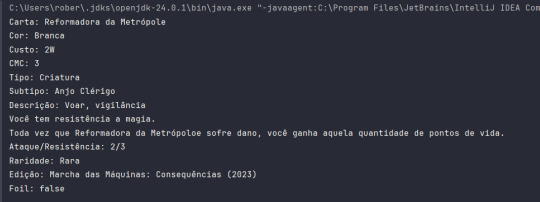
Finally, I brushed off my old database skills, grabbed PostgreSQL and came up with a little table.

Not much, but I'm happy to report project "mtg-repo" (still working on a name) is coming together.
Ta-da!
5 notes
·
View notes
Text
Solid software architecture is essential in overall successful software project development. Find out the best practices and proven patterns for designing efficient Java software architecture.
0 notes
Text
Learn how to code the object pool pattern by pre-allocating memory and reusing objects. Which can greatly improve performance when reusing short lived objects like bullets and particles.
This tutorial will show you how to create and manage a pool of bullet objects. For example, this is useful in shooter and bullet hell games which have thousands of bullets on the screen.
The tutorial is written in the Java programming language, and uses the free Processing graphics library and integrated development environment.
The object pool pattern can be especially useful with programming languages which use automatic garbage collection like Java, C#, JavaScript, Python, etc.
Since automatic garbage collection can stall your program and reduce your frame rates. The object pool pattern gives you more control over when the garbage collector comes to reclaim the memory.
The downside of the object pool pattern is that it complicates the life cycle of the object. Meaning you need to reset the variables of the object before you can reuse it. Since its variables are unlikely to match the defaults after repeated use.
There are a few ways to implement the object pool pattern, this tutorial will show you one method.
Walkthrough and full code example on the blog:
#gamedev#indiedev#tutorial#processing#programming#java#software#software design#software development#game development#coding#design patterns
19 notes
·
View notes
Text
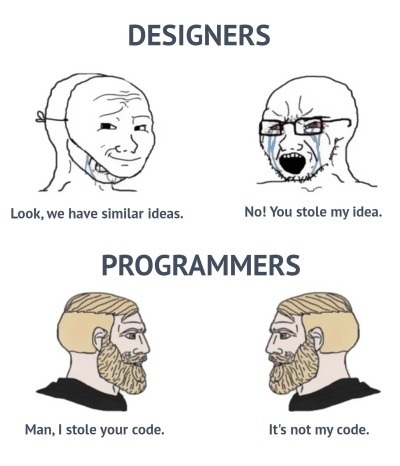
When you find out that your 'original' code is just a copy of a copy of a copy...
#programmer humor#programming#geek#nerd#programmer#computer#python#laptop#c#meme#pc#computer science#java#developer#software developers#full stack web development#code#cs#javascript#c++#software engineer#software development#dev#web development
133 notes
·
View notes
Text
Growing my (code)base
The open-source coding challenge I started back in June is approaching its first API freeze, in other words, version 1.0 ! On Monday night I released v0.9.8 with the following line counts:
+ 66K lines of code (excluding blanks and comments)
+ of which 40K are Java and 22K are C++
Compare with v0.9.0 (from October), which contained 42K lines of code, of which 23K were Java and 15K were C++.
4 notes
·
View notes